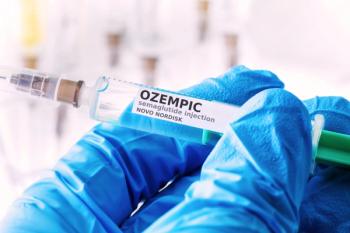
- Hot Topics in Mass Spectrometry
- Pages: 32
LC–MS/MS for Quantifying Nitrosamines in Olmesartan Tablets
Mithibai College of Arts scientists recently used liquid chromatography-tandem mass spectrometry (LC–MS/MS) for detecting nitrosamines in blood pressure medication.
A recent study led by scientists from the Mithibai College of Arts in Mumbai, India shows the effects of using a modified version of liquid chromatography-tandem mass spectrometry (LC–MS/MS) for detecting nitrosamines in Olmesartan tablets. Their findings were published in the Journal of Chromatography A (1).
Mutagenic and carcinogenic substances, which can cause health risks to humans, including increasing cancer risks, typically stem from the manufacturing processes of drugs, food processing, and water treatment. N–Nitroso compounds, which are known for mutagenic and carcinogenic properties, have been found in various products, including dairy, vegetables, alcoholic beverages, and meats. These compounds can also appear in pharmaceutical products. N–nitrosamines are viewed as genotoxic impurities that can directly or indirectly damage cellular DNA. In particular, the U.S. Food and Drug Administration (FDA) highlighted N–Nitrosodimethylamine (NDMA), N–Nitrosodiethylamine (NDEA), N–Nitroso-N-methyl-4-aminobutyric acid (NMBA), N–Nitrosoisopropylethylamine (NEIPA), N–Nitrosodiisopropylamine (NDIPA), and N–Nitrosomethylphenylamine (NMPA). NDMA, NDEA, NMBA, NEIPA, and NMPA have been detected in drug substances or products, with NDMA and NDEA specifically being primary nitrosamine contaminants whose presences have led to immediate recalls of pharmaceutical products from the market.
In this study, liquid chromatography-tandem mass spectrometry (LC–MS/MS) was tested for concurrently measuring nitrosamines in Olmesartan tablets, which are used to treat high blood pressure. Olmesartan works by blocking substances in the body that cause blood vessels to tighten (2). As such, Olmesartan relaxes the blood vessels, lowering blood pressure and increasing the supply of blood and oxygen to the heart.
LC–MS/MS offers minimal sample consumption, suitability for thermally labile analytes, and heightened sensitivity for detecting nitrosamines in pharmaceutical matrices. Conventional LC–MS/MS often needs extensive and time-consuming sample preparation, though this was addressed in this study by developing more efficient and streamlined sample preparation that reduced variability and improved recovery rates, the scientists wrote. With this method, internal standards were not needed to overcome problems while analyzing nitrosamines.
The method applied effective chromatographic separation and optimized parameters for mass spectrometric detection. Detection was carried out using APCI positive ion mode. Chromatographic separation was achieved using a Thermo Accucore PFP column (150 mm x 4.6 mm, 2.6 µ), with a simple gradient elution of mobile phase consisting of 0.1% formic acid in water (mobile phase A) and methanol (mobile phase B). The total run time was 20 min, with a flow rate of 0.800 mL/min.
Overall, the established method showed excellent linearity (R2 > 0.99) and sensitivity for all the nitrosamines. The detection and quantification limits were sufficiently low for trace nitrosamine levels, hold good signal-to-noise (S/N) ratios. When tested on Olmesartan tablet samples, the method showed good accuracy, with recovery ranges between 80–120%. This new analytical approach showed notable repeatability and reliability, making it possible to precisely quantify nitrosamine levels in Olmesartan tablets in a single analytical run. This work can help pave the way for more significant advancements, allowing for the facilitation of more precise and accurate analysis in routine quality control analysis.
References
(1) Pawar, N.; Bhardwaj, A.; Vora, A.; Sharma, S. A Multianalyte LC-MS/MS Method for accurate Quantification of Nitrosamines in Olmesartan Tablets. J. Chromatogr. A 2024, 1732, 465176. DOI:
(2) Olmesartan (Oral Route). May Foundation for Medical Education and Research (MFMER) 2024.
Articles in this issue
about 1 year ago
Hot Topics in Mass Spectrometry October 2024 North America PDFabout 1 year ago
Hot Topics in Mass Spectrometry October 2024 Europe PDFabout 1 year ago
Advances in Spatial Biology using TIMS-TOF MSNewsletter
Join the global community of analytical scientists who trust LCGC for insights on the latest techniques, trends, and expert solutions in chromatography.





